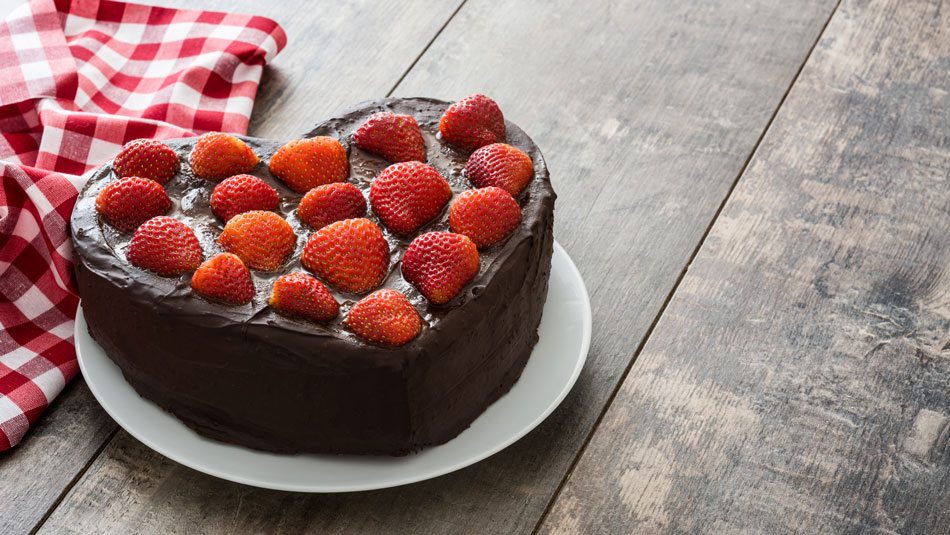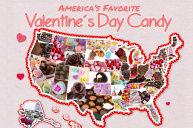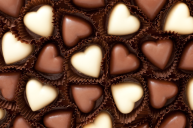When it comes to Valentine's candy, there's perhaps nothing more iconic than the heart-shaped box of chocolates. Today, chocolate sales make up about 75 percent of all Valentine's Day candy sales; in 2014, Americans gobbled up approximately 40 million heart-shaped boxes, according to the National Confectioners Association.
Videos by Wide Open Country
But when and how did this lasting love affair between chocolate and Valentine's Day begin? That story is one of chance and timing, told over centuries.
Chocolate's roots as a love food date back to 14th century Mesoamerican cultures. In both Aztec and Mayan societies, chocolate was a luxury item enjoyed by the elites, often in the form of an elixir that married roasted cacao beans with vanilla, honey, spices and chiles. This ambrosia was prized for its medicinal and aphrodisiac properties.
So prized were these cacao beans, Aztec leaders would accept them in tribute payments and taxes, and they were often part of business deals — and businesslike marriage negotiations.
Chocolate made the jump to Europe by the early 1600s with explorers returning from present-day Central and South America. Soon, chocolate houses were popping up in London and Paris, becoming popular places for social gatherings.
Meanwhile, Valentine's Day was undergoing an evolution.
The holiday's own history is one shrouded in several layers of mystery, likely a convergence of Christian and ancient Roman traditions, namely the pagan fertility festival of Lupercalia, celebrated in the ides of February — February 15.
The first express link between Valentine's Day and amorous love seems to come from Chaucer's 1382 dream-vision poem "Parlement of Foules," in which he writes, "every bird cometh to choose his mate on seynt Voantynes day."
Over the following few centuries, Valentine's Day became increasingly popular, with cards, notes, songs, poems and flowers — especially red roses — exchanged. Candy, however, wasn't involved, with sugar still too precious a commodity in Europe.
That all changed with a British family chocolate maker named Richard Cadbury — you know him from the gooey Cadbury Creme Eggs sold around Easter — who was tinkering with ways to make his family's drinking chocolate more palatable. He accomplished this by extracting the pure cocoa butter out during the process — but what to do with all that extra cocoa butter?
Cadbury's solution were "eating chocolates," which he sold off in delicate boxes he designed himself. Their purpose was twofold; when the chocolates were gone, the boxes could be used to hold other sentimental mementos.
In 1861, in a stroke of pure marketing genius, Cadbury began selling heart-shaped boxes decorated with Cupids and roses, and the rest, as they say, is history.
In the U.S., the first mass-produced valentines appeared, the creation of Esther A Howland, the "Mother of the Valentine," who made spectacular cards decorated with lace, ribbons and other "scrap."
By the dawn of the 1900s, Valentine's Day continued to blossom here in the United States. Another name you'll know in the world of chocolate, Milton Hershey, began coating his caramel candies in chocolate and, in 1907, introduced his chocolate "Kisses," so named for the smooching noise made by the machines during production.
In 1923, however, a new name would appear that still dominates Valentine's Day today: Clara Stover, wife of Russell Stover.
Clara began wrapping up boxes of her "Bungalow Candies" in 1923 from her home kitchen in Denver, Colorado. After moving to Kansas City, the stovers opened up a number of factories and sold their namesake candies — in heart-shaped boxes, of course — to department stores throughout the Midwest. Soon, Russell Stover was big enough to buy out its main competitor, Whitman.
Today, Russell Stover remains on top, pulling in some $600 million in annual sales as the country's No. 1 box chocolate company.




